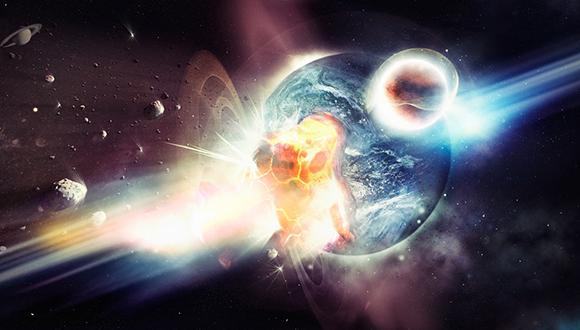Gravitational waves: a new way to observe the universe
TAU utilizes Nobel-winning research to expand our understanding of matter and space
On August 17, 2017, scientists at the Laser Interferometer Gravitational-Wave Observatory (LIGO) detectors in Louisiana and Washington and at the Virgo detector in Italy detected the first "ripples in space," or gravitational waves, produced by the merger of two ancient remnants of stars known as neutron stars.
The 2017 Nobel Prize in Physics was awarded to the creators of the LIGO instrument and its detection of gravitational waves. Scientists at Tel Aviv University are racing to use results from the LIGO experiments to expand our understanding of the universe, with the new discovery appearing today in Science and Nature. An additional TAU study is appearing in the Astrophysical Journal.
"This is a milestone in the growing effort by scientists worldwide to unlock the mysteries of the universe and of earth," says Prof. Ehud Nakar of TAU's Raymond and Beverly Sackler School of Physics and Astronomy, who together with his graduate student Ore Gottlieb led the theoretical analysis for the new studies on the discovery appearing today in Science and Nature.
The studies were led by Dr. Yair Arcavi, who joins TAU's School of Physics and Astronomy next year from UC Santa Barbara, in collaboration with Prof. Dovi Poznanski, Prof. Dan Maoz and their students at TAU's School of Physics and Astronomy.
Building on Einstein
The existence of gravitational waves was first predicted by Albert Einstein a century ago. They afford insight into an event that took place in a galaxy 120 million light years away and provide valuable information on the evolution of exploding neutron stars, as well as the origin of gold, uranium and other heavy metals on earth.
"It is difficult to exaggerate the importance of this discovery," says Prof. Poznanksi. "Until recently, we could observe the universe only through light waves that reached us. This new ability to study gravitational waves is analogous to a sense of touch. It's as though we now have the ability to explore the universe through both sight and touch."
"This discovery has allowed astronomers to combine gravitational waves with light and produce a detailed model of the emission for the first time. This introduces a new era in astronomy," says Gottlieb.
A neutron star forms when a star much bigger and brighter than the sun exhausts its thermonuclear fuel supply and explodes into a violent supernova. The explosion of neutron stars, which are made almost entirely of neutrons, was detected by multiple telescopes across the electromagnetic spectrum, from gamma rays and visible light to radio waves.
"This is only the beginning," Prof. Maoz notes. "We expect many surprising discoveries in the coming years."





